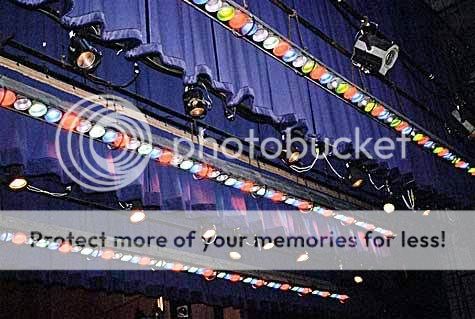Obsolete term for compartmentalized striplights or borderlights, such as the R40 Strip. Used circular glass color media called rondels, or roundels.
The term is still used in the rental industry, especially to refer to multi-cable break-outs built for strips (usually tails 1,2,3 are 3'-0", while tails 4,5,6 are 13'-0", etc).

Photo by Skip Murray. http://i25.photobucket.com/albums/c100/lescharles73/strips.jpg
According to McCandless' A Method of Lighting the Stage:


X-ray (Altman #520) on an elementary school stage.
Photo by [user]Les[/user].
The term is still used in the rental industry, especially to refer to multi-cable break-outs built for strips (usually tails 1,2,3 are 3'-0", while tails 4,5,6 are 13'-0", etc).

Photo by Skip Murray. http://i25.photobucket.com/albums/c100/lescharles73/strips.jpg
According to McCandless' A Method of Lighting the Stage:
The company was the National X-Ray Reflector Company, publisher of the book Lighting From Concealed Sources, (Google Books link) 1919.
As a matter of history, it may be noted that the first X-Ray reflectors of silvered, one-piece glass, were used for show window lighting in Chicago. The Washington Shirt Company, in 1897, installed them in the windows at the corner of Washington and Dearborn Streets, and so wonderful and unusual was the result, that a larger number were put inside the store as well.


X-ray (Altman #520) on an elementary school stage.
Photo by [user]Les[/user].
Last edited:


